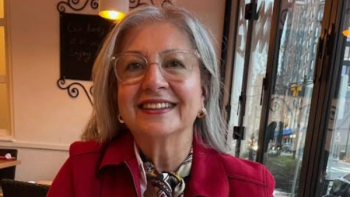
I Have Lung Cancer but no Mutation
Transcript:Mark A. Socinski, MD: Currently, the majority of patients who are diagnosed with non-small cell lung cancer do not have an actionable driver mutation. If you look at the common ones that we see—EGFR mutations, ALK, ROS1 translocations, BRAF mutations—and if you look at a general population of lung cancer patients, you’re probably talking about 20% of the patients. That means that 80%, with current techniques, do not have an identifiable driver mutation. So that’s the more common situation that we’re in, is situations where we don’t have a specific target.
Now, for the 20% that have one of those particular driver mutations, the therapeutic approach you take for these patients is very different than in the other 80%. It’s important to understand whether you’re in the 20% or 80% of patients. We still want to personalize the treatment to optimize the impact the treatment could have on the course of your disease. That’s why it’s important to know this sort of thing. But those are the numbers that we generally deal with.
Edward S. Kim, MD: Your doctor will talk to you about different mutations and doing genetic markers on your tumor, and you’ll be hopeful that something will come back. Everyone is, because it seems like a rational and intelligent way to pick therapy.
There are plenty of mutations out there, but we don’t necessarily have drugs that match up to them to show benefit in tumors. So don’t feel that you’re in the minority on this. For instance, your tumor may not show any driver mutations or actionable markers. Then, we do have therapies. And those therapies have improved survival and quality of life over previous therapies. So they are good therapies. It just puts you in a bucket, or a classification, where there’s not necessarily what’s called a “driver mutation” or a “targetable drug” that matches up to your mutation. In those situations, we go to chemotherapy and we start looking for other factors—such as how fit you are.
Chemotherapy does have some side effects, and it tends to cause fatigue. It can suppress your bone marrow, and do other things like that. There isn’t much nausea and vomiting like there was in older drugs. I’ll have patients who will look on YouTube or online and they’ll look at patients getting intravenous chemotherapy (and usually it’s some leukemia or bone marrow transplant patient), and I have to explain to them that this is not that situation at all. I have plenty of patients who take chemotherapy and who are able to work for the majority of their time, and have a normal life with some days that are just tougher. You’re tired and you don’t want to get out of bed, maybe. And those are lazy Saturdays, or it’s about a week after you get chemotherapy. And that’s OK, because you are sort of being active. You’re just receiving drugs that are making your body more tired.
So that is something we would look at first—whether there’s fitness. I tell patients, “Look, we’re going to find the right drugs and we’re going to give them to you. What you have to do is maintain your fitness and not lose weight, because unexplained weight loss or unintentional weight loss is a bad thing.” There’s a reason why nobody can lose 5 pounds if you ask them in this country, unless they lose a limb or something, because it’s just not going to happen. So eat, don’t worry about your cholesterol, and stay active. Don’t join an aerobics class. Just keep doing your normal daily activities.
And now we’ll select a chemotherapy. A chemotherapy regimen is comprised of 2 drugs—a platinum agent and another agent. Your doctor will advise you on what may be the best 2-drug regimen for you. In some instances, we add a third drug called a VEGF drug. VEGF is vascular endothelial growth factor. Again, another targeted drug that has targeted properties, but we don’t measure anything in the tumor, necessarily, to match it up. There are some specific eligibility requirements that one has to have to take some of these drugs, but it is a third drug that we will add on in many patients in this situation.
Transcript Edited for Clarity





